Video conferencing apps are carrying the remote work era on their backs. And there are many options available to choose from according to your needs. But almost all of them have one thing in common: the video streams in all the apps feel intrusive.
With their high-definition videos, they make you feel like you are under constant scrutiny. Around is different. With its innovative floating heads video approach, video meetings will cease to be exhaustive and intrusive.
Around features all the video streams in thought bubbles by default. The setup is great for smaller meetings and collaboration sessions. Unlike other apps, the videos don’t take over your entire screen, leaving no room for the other apps you need for work.
Installing the Around app
Around is currently in the beta phase and hence free to download and use. Teams from Around is also on the way. To use Around, you either need a Windows 10 system or macOS Mojave. Around also has a web app that is supported in Google Chrome, but the web app doesn’t offer the same level of features and functionality.
Linux users can use the web app to attend your Around meetings. Floating mode, mood filters, or echo terminator is not available in the web app. Apps for Linux and mobile users are under development and will be available in the future.
Go to around.co and click the ‘Get Started’ or ‘Sign Up & Install’ button, whichever appears on your screen.

As the software is currently in the invite-only phase, you first need to sign-up for the waitlist to download it. You can sign up with Google, Slack, or using your email address. Click the option that suits you the best. For the sake of this guide, we’ve chosen ‘Sign Up with Google’.
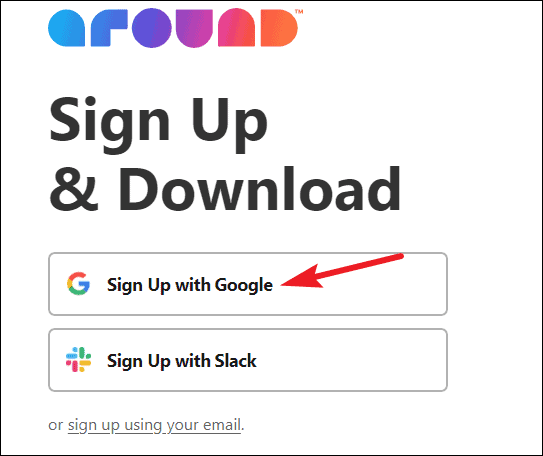
The sign-in page for Google will appear. Log in to your Google account to use Around with that account.
Once you sign up, Around will ask you to invite people who you want to use Around with. Enter the email addresses of your colleagues to extend them an invitation. This will send them an invite link which they can use to directly download and install Around. You can also skip this step right now and invite them later. Click ‘Skip this step’ to go to the download page.
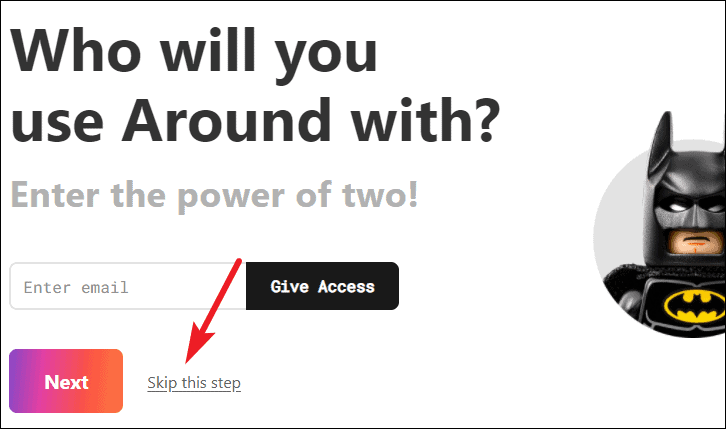
Once you complete these steps, the download page for Around will open. Click the option for your system to download the corresponding file.

For Windows, run the .exe file from your downloads. Then follow the instructions on the screen to install it. It can take some time for Around to install. Don’t close the wizard or your system while Around is installing.
Using Around Video Conferencing
Open the app and log in to the account you used to sign up for downloading Around. Click the ‘Sign In’ button. You can also use the app to attend meetings as a guest without signing in.
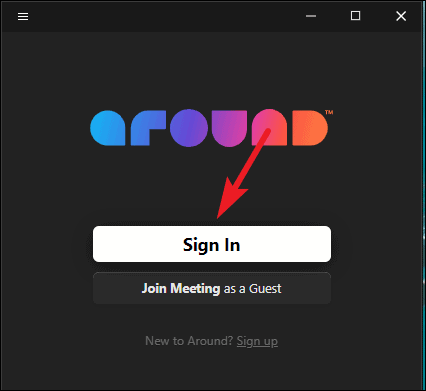
It’ll redirect to the login page on the browser. Log in to your account. If you were already logged in on the browser, you won’t have to enter your login details again. Just click the ‘Launch Around’ button, and it’ll log in to your account on the desktop app.
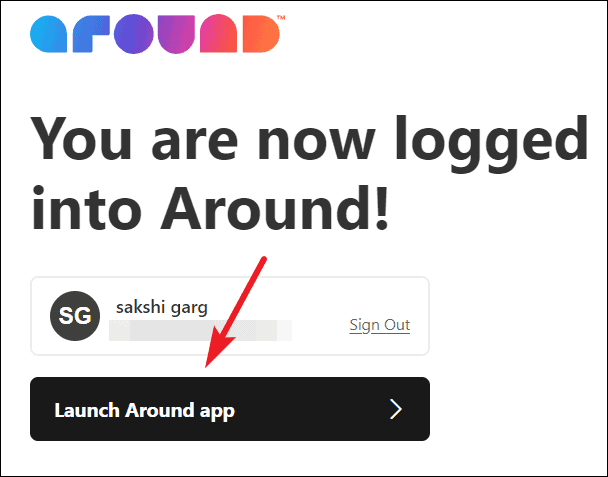
You’ll reach the Around lobby on the desktop app. The first thing you’ll see is the personal room that Around will create for you by default. You can use a room as a place to have recurrent meetings as the link for the room stays the same until you change it.
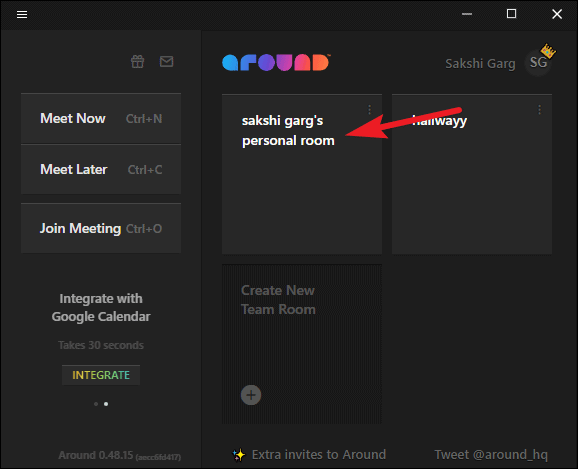
By default, Around will create a link for your personal room. But you can edit it. Click the ‘More options’ icon (three-dot menu) on the upper-right corner of the room thumbnail and select ‘Edit settings and members’ from the menu.

The window for editing room settings will open. Go to the textbox for the room URL and edit it. Then, click the ‘Save’ button.
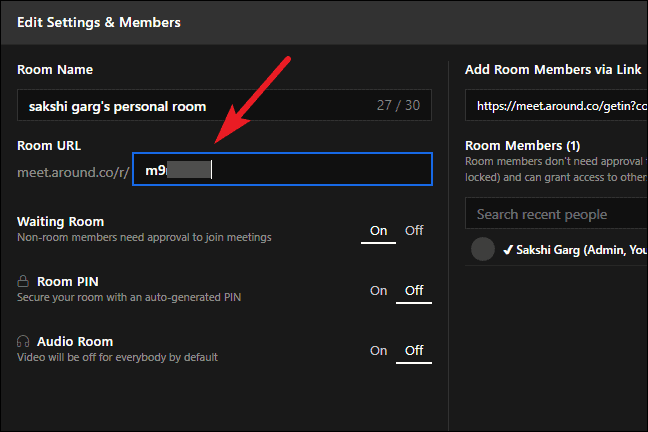
Tip: Use your name as the link for your personal room to access it faster.
To create ad-hoc meetings that don’t take place in a room, click the ‘Meet Now’ button on the left panel. Ad-hoc meetings can be used to meet with people you don’t want to share the room info with, as people with the link for the room can request to join the meeting at any time.
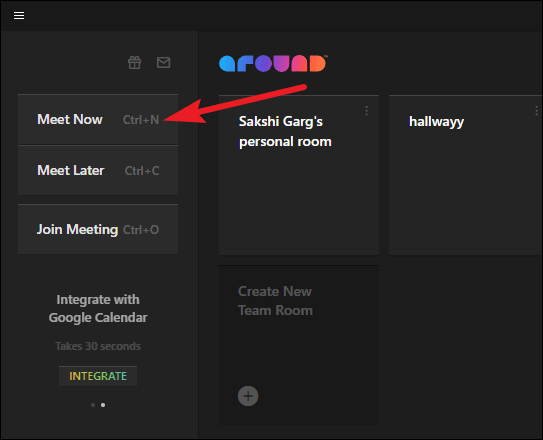
You can also have meetings outside the room at a later time. Meet later is useful when you want to share the meeting link with someone right now but want to have the meeting later but also not in any of the rooms. Click the ‘Meet Later’ button on the left panel. Around will create a one-time meeting link which you can share right now but use later. Copy the meeting link and share it with others. You’ll also need the meeting link to join that meeting yourself.
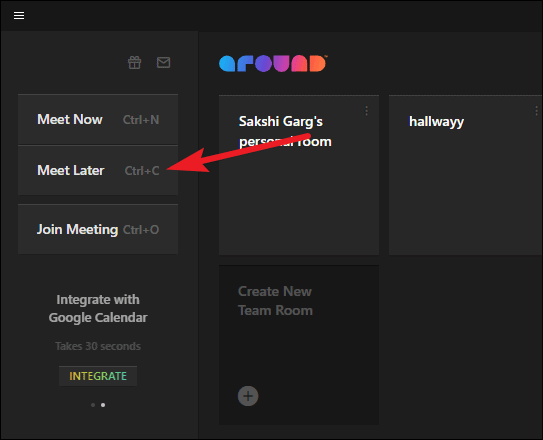
To join someone else’s meeting on Around, click the ‘Join meeting’ button. Also use the ‘Join meeting’ button to join the meeting you created using the ‘Meet Later’ button.

Then, enter the meeting link or meeting ID in the textbox and click the ‘Join’ button.
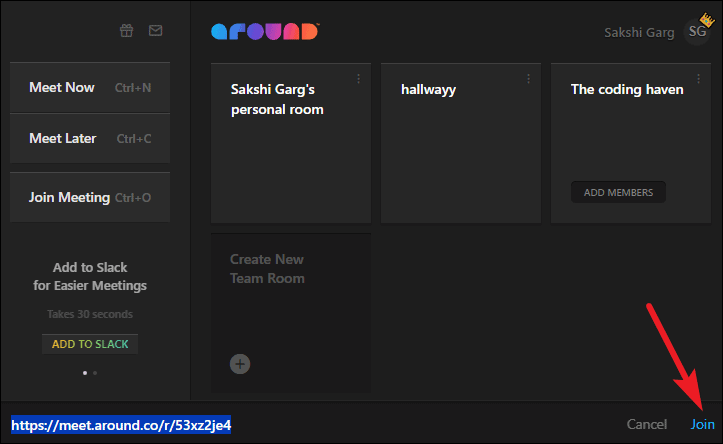
Using Rooms in Around
Around is the video conferencing app you want to turn to when you’re collaborating with small groups. Rooms in Around help facilitate this collaboration. Apart from the personal room, you can also create any more rooms for your team.
Create different rooms for different team members in Around, and it’ll make it easy to connect with them. You won’t have to share ad-hoc meeting links with them every time.
A room you create can have members. Members have certain privileges like they don’t need any approval to join the room unless the room is locked, and they can even add other people. You can also add members to your personal room, but it’s best to refrain from it and keep your personal room personal.
To create a new room, click the ‘Create New Team Room’ option.

A dialog box for creating the room will open. First, enter a name for the room.
Then, it’s time to create the room URL. The room URL can be used to directly start meetings, so you can have a URL that’ll be easy to remember. If the URL doesn’t matter, you can leave the textbox empty, and Around will auto-generate a URL using a random combination of letters and numbers. You can edit this URL later at any time.
Configure the rest of the settings, like the room PIN, waiting room, and audio room preferences, and click ‘Next’.

Add members you want to give access to the room. Either copy the link and share it with them or type their names and see if they pop up in suggestions. Click their name to add them. Invited members have to join the room from their end after being added. Finally, click the ‘Save’ button.
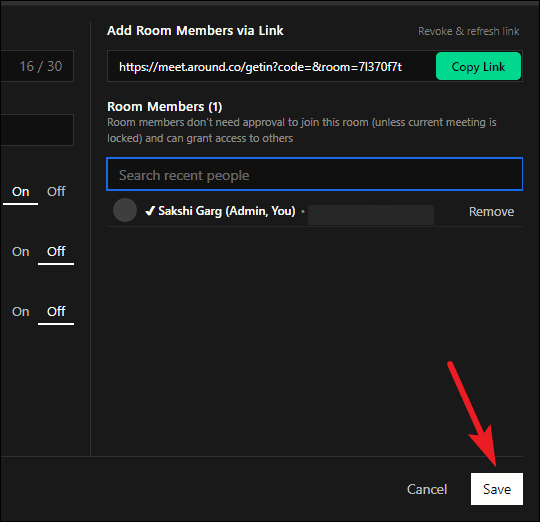
To join a meeting in a room you’re a member of, whether or not you’re the admin, just click the room thumbnail.
Meetings in Around
Whether you start an ad-hoc meeting or in a room (personal or otherwise), the setup for all the meetings is the same.
By default, Around starts all meetings in the desktop app in the Floating mode. In the floating mode, only the heads of all users in the meeting will appear in thought bubbles on the screen. You can change the size of the bubbles. Go to the floating bubbles, and a window will appear around them. Then, resize the window like any other window in Windows 10, and the size of the bubbles will adjust accordingly.

You can switch manually to campfire mode at any time.
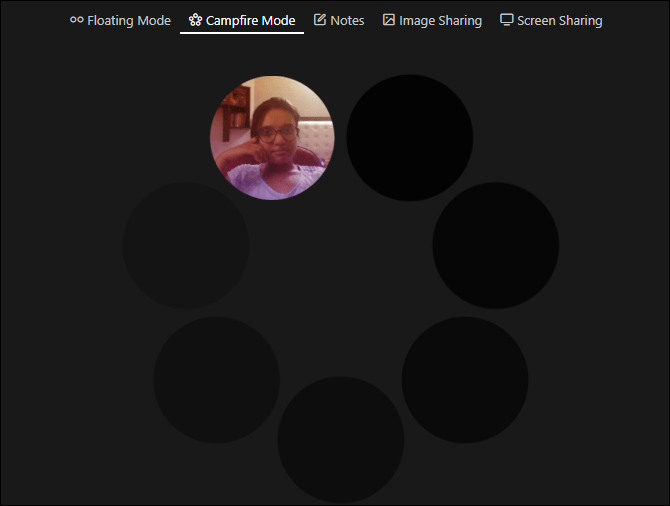
Go to your floating video and a window will appear around it. Click the option for ‘Campfire mode’ to switch modes. Switching a mode only affects your view and not other members in the meeting.

You can also configure the settings to start meetings in the Campfire mode if that’s your preference. Click on your profile icon from the Around lobby.

Select ‘Preferences’ from the menu.

Then, select ‘Off’ for ‘Join Meetings in Floating Mode’.
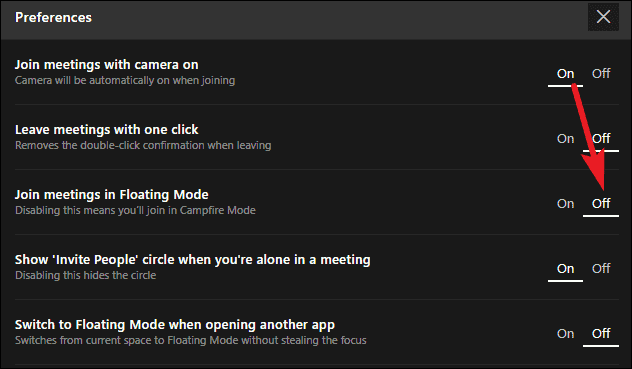
Note: The web app supports only campfire mode.
Around uses AI-camera framing and constantly keeps track of your head, whether you are using the floating mode or the campfire mode. AI-framing keeps track of your head even as you are moving and adjusts the video stream accordingly. So you don’t have to worry about any embarrassing distractions in the background at any time during the meeting.
To change the filter, go to your self-view bubble and click the ‘Rainbow’ icon. Keep clicking the icon to change between different filters.

Sometimes looking at your own video can become too exhausting. You can hide your video bubble without turning off your camera. Go to your video and right-click on it. Then, click ‘Hide self-view’.
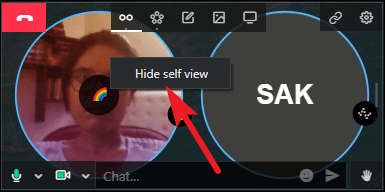
Around makes it really easy to share the meeting link with other people. You don’t have to go through multiple clicks to get the meeting link. Just click the ‘Copy link’ button right there next to your video.
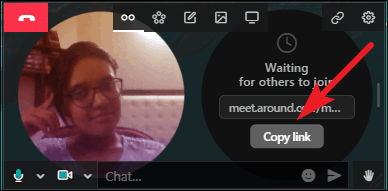
When someone requests to join the meeting, the window re-appears around the floating bubbles, and a notification appears. Click the ‘Accept’ or ‘Reject’ button to respond to the join permission.
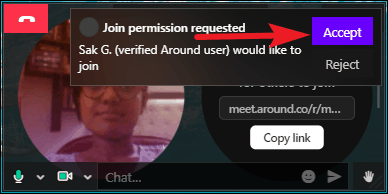
To leave a meeting, click the ‘Leave’ button.
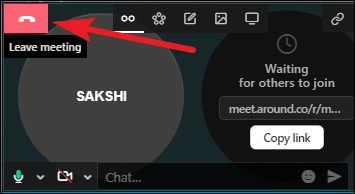
Then, click the ‘Confirm’ button.
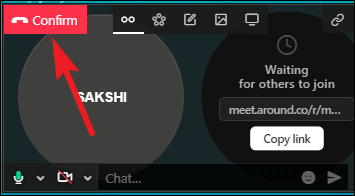
You can change the settings to leave the meeting with a single click. Open ‘Preferences’ from the Around lobby. Then, select ‘On’ for ‘Leave meeting in a single click’.

Around does not have an option to end the meeting for everyone from within the meeting. If you leave the video with other participants still in it, they can continue to meet. To end the meeting for everyone, go to the Room thumbnail in the Around lobby and click the three-dot menu. Then, click ‘End meeting’.
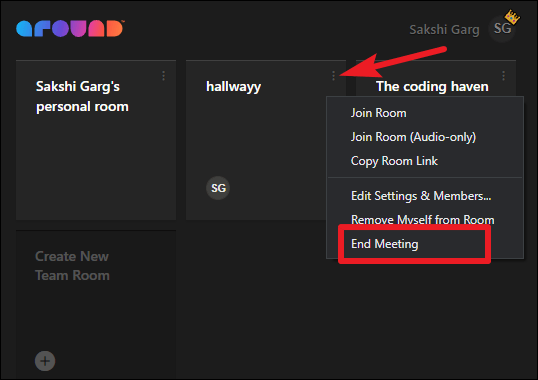
A confirmation message will appear asking if you want to end the meeting for everyone. Click ‘Yes’.
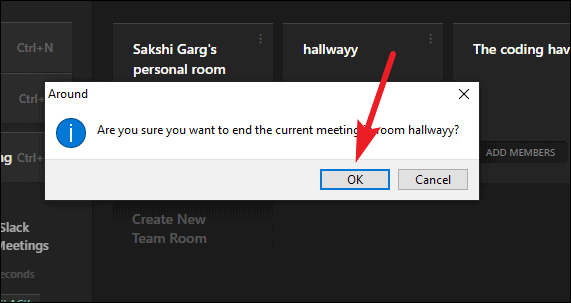
You can also kick others out before leaving the meeting or during the meeting if someone’s causing trouble. Right-click on their video bubble and select ‘Kick out from meeting’ from the menu.
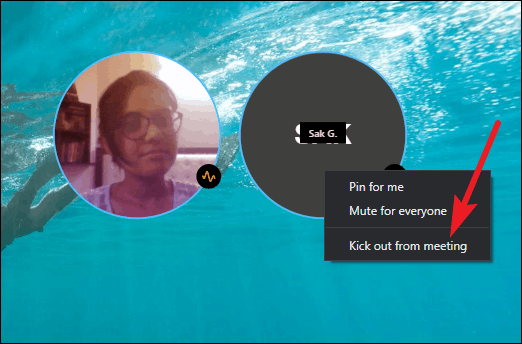
Using Around might feel a bit different from other video conferencing apps at first glance, but it’s a different you’re going to like. You can even have a deep integration with Slack and Google Calendar to use Around with apps you’re already familiar with and use.

